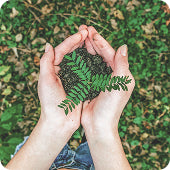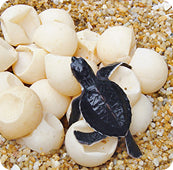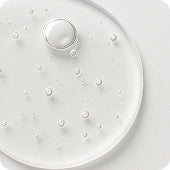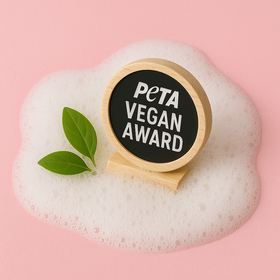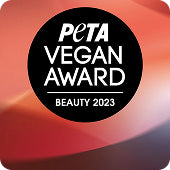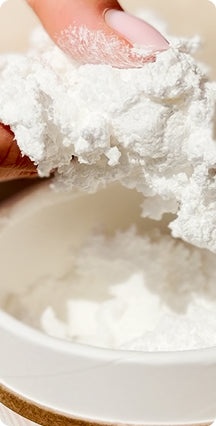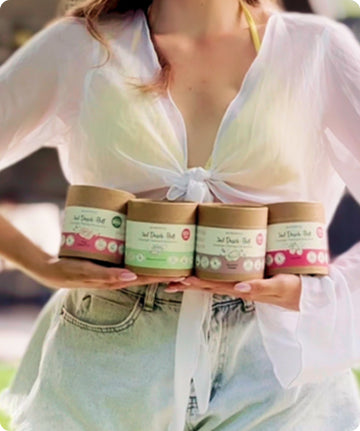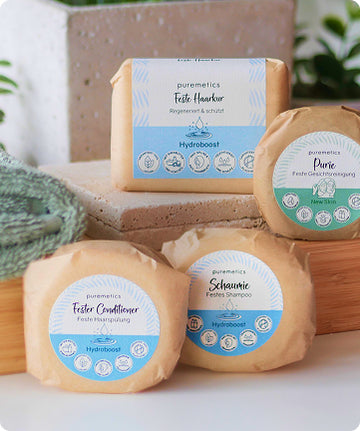Environmental sinners in the cosmetics industry - which ingredients are destroying the environment
Environmental sinners in the cosmetics industry - which ingredients are destroying the environment

With our vegan, natural and plastic-free beauty alternatives, we want to save our planet and your skin. One of the top priorities is that we do without critical chemicals and questionable ingredients and instead rely on natural super boosts. You can read here why chemistry is poison for your body, which ingredients you should definitely avoid and how you can find natural, healthy alternatives for your body care.
But chemicals in daily care products not only harm your body, the environment also groans under the stress of toxic chemicals from cosmetics. Raw materials such as palm oil or petroleum also cause enormous damage to the environment.
We show you the ingredients that are at the top of the red list of environmental pollutants. And always remember: every cosmetic purchase is your ballot for the future of our planet!
Cheap, popular, harmful - palm and petroleum
oil
As you may know, petroleum is the raw material for many synthetic fabrics and products. Even the conventional cosmetics industry does not seem to be able to do without this cheap, versatile raw material. It often ends up in ingredients such as emulsifiers and paraffins, which in turn are harmful to the environment. But even the extraction of oil represents an enormous environmental burden. For the development of oil deposits and the subsequent production, nature and habitats are destroyed and sensitive ecosystems are thrown out of balance. Animal and plant worlds must give way to machines in order to extract the limited resource of oil down to the last drop. The situation is particularly critical when oil is extracted from the bottom of seas and oceans. Again and again there are reports of oil leaks as a result of which the seas are polluted and animals die.
The good news? Natural cosmetics work without petroleum and its chemical developments!
Palm oil
Palm oil, like petroleum, is cheap and versatile in its further processing. Palm oil is therefore constantly used in the conventional cosmetics industry and is a very popular renewable raw material. It is later processed into surfactants, for example; some of these surfactants are highly hazardous to health.
However, in order to meet the current demand for palm oil, there are massive environmental interventions with devastating consequences.
Global palm oil cultivation is mainly concentrated in two countries in Southeast Asia: Malaysia and Indonesia. In order to master the increasing demand, new cultivation areas are always needed. For this purpose, the native rainforest is cut down and replaced by the dangerous monoculture by only planting palm trees. Large quantities of climate-damaging greenhouse gases are released in the process. If the current development continues, the rainforest in these two countries will be largely destroyed in a few years. This destruction also robs many animal species of their habitat and they die as a result of accidents, displacement and injuries. Endangered animal species such as the orangutan are particularly affected by this - the palm oil industry treats the local wildlife unscrupulously and without consideration.
Less known, but just as harmful - these ingredients also destroy the environment
Bleach - Toxic water killers
Bleaching agents are used in cleaning and cosmetic articles either to influence the color of the product itself or to achieve a specific result during use. Bleach is used, for example, in detergents for white laundry.
The problem? The basic ingredient in many bleaches is sodium perborate. Although waste water is treated in sewage treatment plants, toxic boron salts can later develop and remain in the water. They have a lasting impact on flora and fauna in water bodies.
Hormonally effective substances - hormones for the environment
Everyday cosmetics such as sunscreen and toothpaste often contain hormonally active substances. These substances are so similar to the body's own hormones in terms of their structure that they also act like hormones and can influence the natural hormone effect. These hormonally active ingredients are therefore subject to criticism. If the substances from cosmetics get into nature through wastewater, for example, they also act like hormones in water bodies and other ecosystems and can thus disrupt ecosystems and natural hormone cycles in fish and other animals.
Paraffins - Deadly bird food
Paraffin is a waxy by-product of the petroleum industry and is used in shoe polish, candles and also in the manufacture of cosmetics due to its diverse properties. It is a light-colored basic ingredient in many creams and ointments.
The consistency of the substance changes depending on the temperature and processing. The wax hardens in cold water. If the substance gets into the sea water through the use of paraffin-containing cosmetic products or through the sea transport of the raw material, veritable clumps of paraffin can form here. These are currently often washed up on coasts. The problem? Waterfowl mistake the clumps of paraffin for food and die as a result of wax consumption.
Polyethylene Glycols (PEG) – Perpetual environmental pollution
PEG stands for a range of different synthetic substances which, due to their practical properties, are mainly used as additives in the cosmetics industry, for example to achieve the desired consistency of a product.
These chemical ingredients are specially made to be long lasting and stable in the products. What may still be practical for the consumer can have devastating consequences for the environment. Because PEGs are also durable in the environment and are therefore difficult to degrade by microorganisms.
If you would like to be informed directly about the latest blog posts, please follow us Instagram ! :-)



